Known for being the largest state in the United States, Alaska spans further than most. When looking at a map, Alaska is nearly two and a half times bigger than the state of Texas. The state is 663,268 square miles and is the seventh biggest sub-national division in the world. So, how wide is Alaska?
Alaska has a diameter from east to west of 2,400 miles. The state has The Bering Sea to its left and Canada to its right. Overall, Alaska is ranked first when it comes to the longest state that spans east to west. This is mainly due to the Aleutian Islands, which are over the 180-degree meridian of longitude.
While this might sound too unbelievable, don’t worry! We’ll look closer at Alaska’s size, width, and length. So, keep reading!
How Alaska Became a Part of the United States

Alaska is the 49th state and was originally owned by Russia before being adopted into the United States in 1867.
©iStock.com/Oleksii Liskonih
Alaska was added to the United States as the 49th state and Hawaii as the 50th. At first, Alaska was originally owned by Russia. The state started with Alaska’s acquisition by Russia and its exploration and settlement teams. The region stayed in Russia’s possession up until the mid-18th century.
It was a hotspot for explorers, traders, and hunters, as the state had a lot of wild game, which contributed to the Fur Trade. Due to popularity, many settlements and trading posts were set up all over the state and attracted attention from people worldwide. Soon, people from all over the world would travel to Alaska in hopes of becoming successful merchants, traders, or hunters.
Russia began to lose interest in Alaska after the Crimean War. It offered to sell the state to the United States in 1859 to the American government. The reasoning behind it was that Russians believed that the United States would offset the plans of Great Britain, which was an enemy of Russia. America decided to purchase the state on March 30, 1867.
The state was sold for $7.2 million and became an official United States Territory. Mainly, Alaska was used as a trade territory and was used for exploration. It wasn’t until January 3, 1959, that Alaska would become the official 49th state.
Geography of Alaska
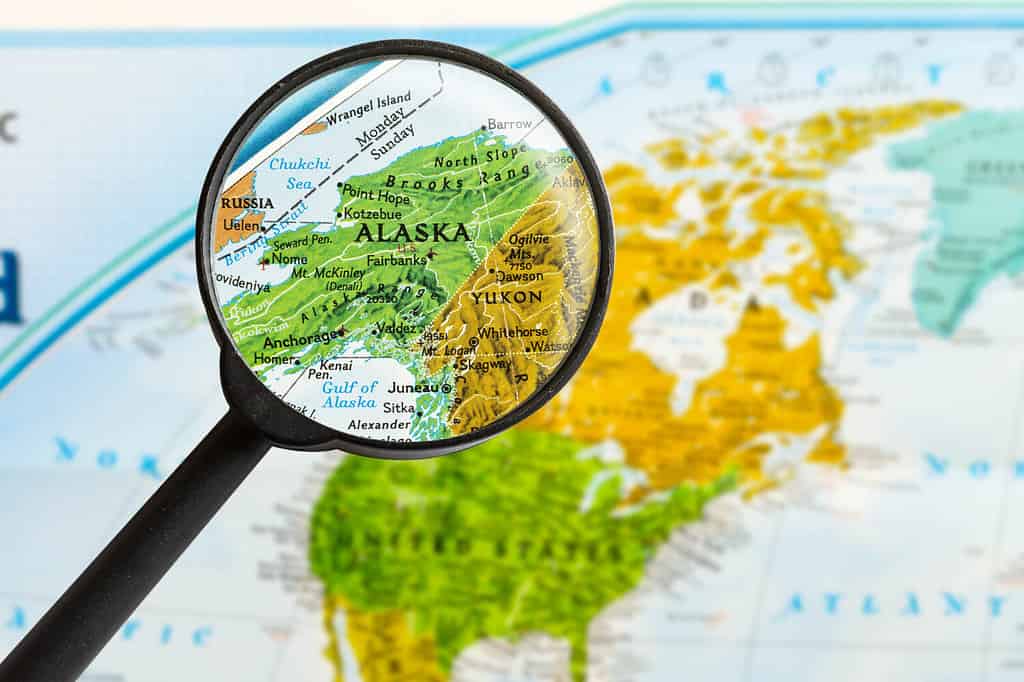
Alaska is home to Mount Denali, a part of one of the Seven Summits.
©Naruedom Yaempongsa/Shutterstock.com
To the north, there is the Arctic Ocean, while to the south, to the southwest, there is the Pacific Ocean. Then, to the east is Canada and the Canadian border. Alaska includes a diverse environment depending on where you are in the state. This can include high-peaked mountainous areas, glaciers, boreal forests, tundra, and sandy beaches.
The state is mainly known for its wide variety of mountain ranges. Alaska has numerous mountains, but the 19 mountain peaks over 14,000 feet are the most notable. Of these, seventeen of the 20 highest peaks in the United States are located here.
Aside from that, Alaska also is home to over 100,000 glaciers. Some of which can take up an entire valley. Alaska is also home to more glaciers than the rest of the world, making it a unique destination. The biggest glacier is the Malaspina which is approximately 850 square miles.
Lastly, Alaska is best known for Mount Denali, previously Mount McKinley. The mountain is the tallest in North America and is in the south-central area. Its peak reaches nearly 20,310 feet above sea level and is the third highest of the Seven Summits. So, how wide is Alaska?
Overall Size of Alaska

Alaska takes up 17% of land owned by United States territory.
©DrRandomFactor / CC BY-SA 3.0 – License
Alaska spans 586,412 square miles, is 365,000,000 acres, and is one-fifth the size of the entire United States. The state is bigger than Texas, California, and Montana combined. To further put it into perspective, Alaska is the same size as Western Europe or Scandinavia. If Alaska were a country, it would rank as the 33 largest worldwide.
In sheer size, Alaska also has more than 17% of the land of the entire United States. Then follows Texas with 7% and California with 4%. So, as you can see, Alaska is a huge state with a lot of land mass.
The state of Alaska spans from east to west 2,400 miles. The largest width from east to west is 2,700 from each tip of the islands to the southeast and southwest. The smallest width in Alaska is The Bering Straight, which is only 51 miles wide. North to south, the state is approximately 1,420 miles.
Aside from all of that, there are also 6,640 miles of coastline. This measurement also includes the Aluetian Chains and many of the small islands. The tidal shoreline, inlets, and tidewater shorelines also equal 47,300 miles.
Even Alaska’s Canadian border is huge. The state has an Alaska-Canada border that stretches 1,538 miles. This is one of the longest borders for a state and country matchup.
Wildlife in Alaska
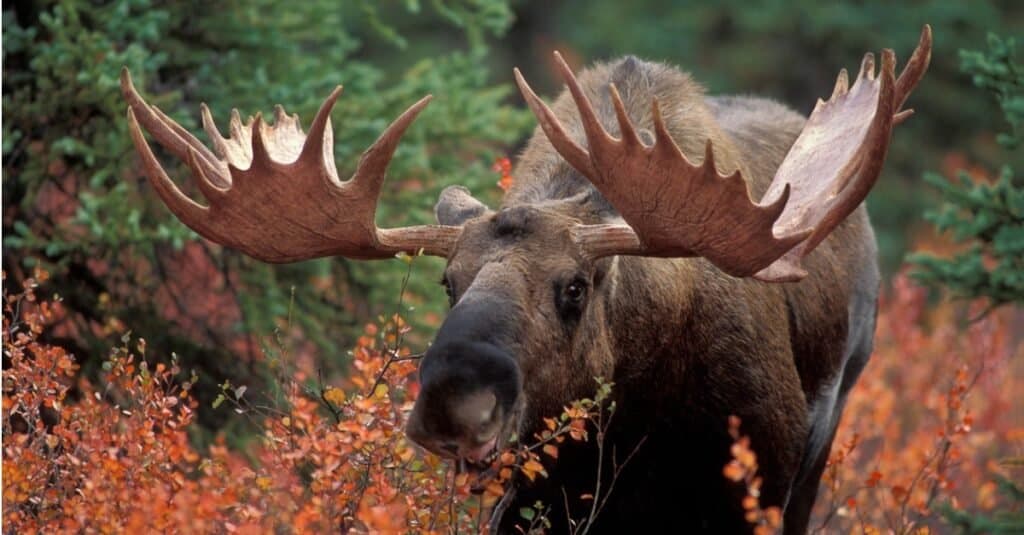
The state is home to many unique species, some of which can only be found in Alaska.
©iStock.com/RONSAN4D
People often believe that Alaska has a small amount of wildlife due to its desolate-looking photography and tundra-covered environments. However, the state is actually booming with wildlife. Many of the wildlife are active during the summer months, which makes them difficult to document.
Plenty of wildlife exists since Alaska is a large state with various environments. In fact, the state has a total of 1,100 vertebrate species. Since much of the state is isolated, getting an exact number is hard, as scientists have tried their best to document all species. The harsh climates make finding and keeping track of all species challenging.
Endemic Alaskan Species
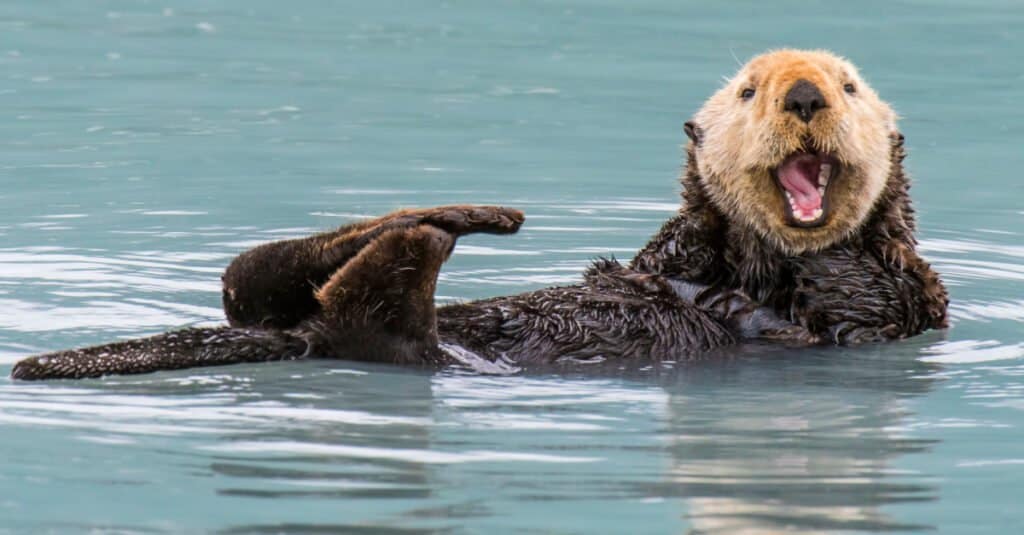
Endemic animals are unique to a region and can’t be found elsewhere.
©iStock.com/David McGowen
Some animals are endemic only to Alaska, while others are quite common across North America. The term endemic is a word used to mean that the animal is native and restricted to a specific place. For example, the animals will only appear in this state or area and nowhere else.
This can include the following animals:
- Prince of Wales Spruce Grouse
- Alexander Archipelago Wolves
- Aleutian Cackling Goose
- Kodiak River Otter
- Prince of Wales Island Flying Squirrel
Alaskans Birds
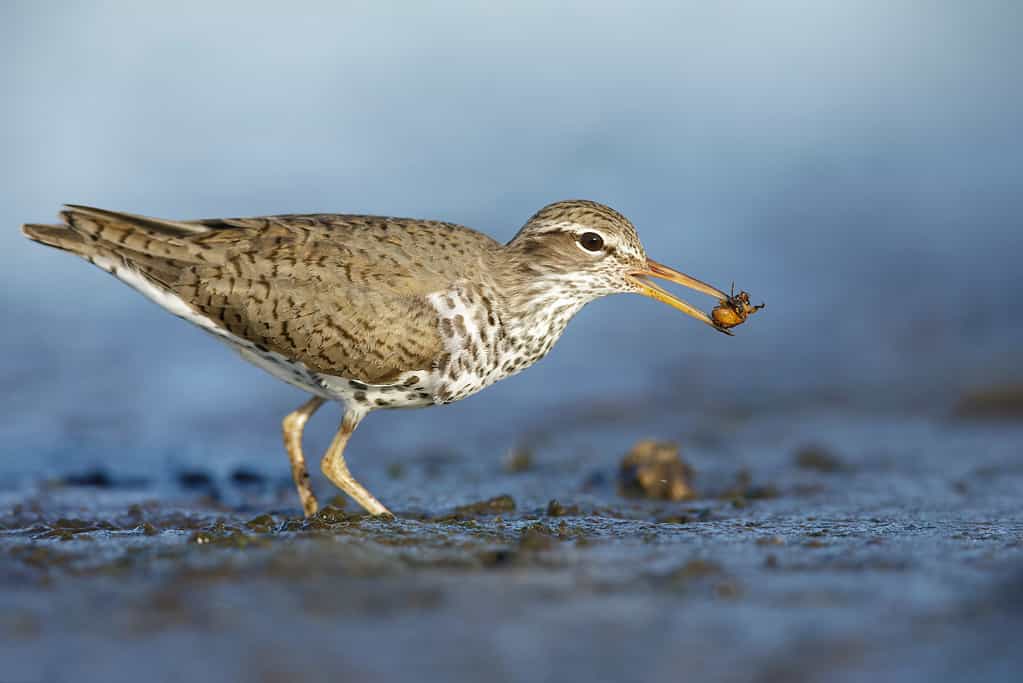
Most of the birds in Alaska are migratory, while the other half are native to the region.
©Agami Photo Agency/Shutterstock.com
Alaska is a popular place for native and non-native birds to migrate to during the fall and summer seasons. The state nearly has over 500 species of birds documented, with many more being found. Half of those species are migratory birds staying for the summer breeding season before heading south.
Taking a closer look at bird species, many of the native birds tend to have evolved to withstand harsh climates and temperatures. Even in the Arctic Circle, birds can be found resting in the trees and on the tundra.
Some bird species you can find in Alaska include:
Alaskans Invertebrates

Alaska is known for its large abundance of crabs, especially Dungeness and King Crabs.
©Jennifer Nicole Buchanan/Shutterstock.com
It’s unknown how many invertebrates are in Alaska. Invertebrates are animals that lack vertebral columns, spines, or a backbone. These animals tend to lack any structure and almost look like they are squishy. Of course, this also describes animals found in the sea who might lack a spine but also have a hard shell.
However, invertebrates play an important role in the state’s ecosystem. Invertebrates are responsible for pollinating plants, being a food source, and helping to control other small populations.
That being said, here are some invertebrates you can find in Alaska:
- Dungeness Crab
- Tanner
- Red King Crab
- Lugworm
- Octopus
- Red Sea Cucumber
Alaskans Fish

Many fish travel upstream in Alaska to lay their eggs to hatch in the following year. This includes Salmon, which is some of the most
common fish
found in the state.
©iStock.com/Karel Bock
Alaska has freshwater and saltwater habitats inside and along the coastline. As far as scientists know is that there are 601 species of fish documented in the state. While The Bering Sea and other oceans make it hard to determine what species are truly out there, it’s still safe to say Alaska has many species.
In addition, there are four major bodies of water near the state. This includes the Arctic Ocean, the Bering Sea, the Gulf of Alaska, and the North Pacific Ocean. Aside from that, Alaska has plenty of streams and rivers that flow throughout the state. This includes the Kenai, Chena, Yukon, and Susitna Rivers.
Here are some of the fishes you can find in Alaska:
Alaskans Mammals
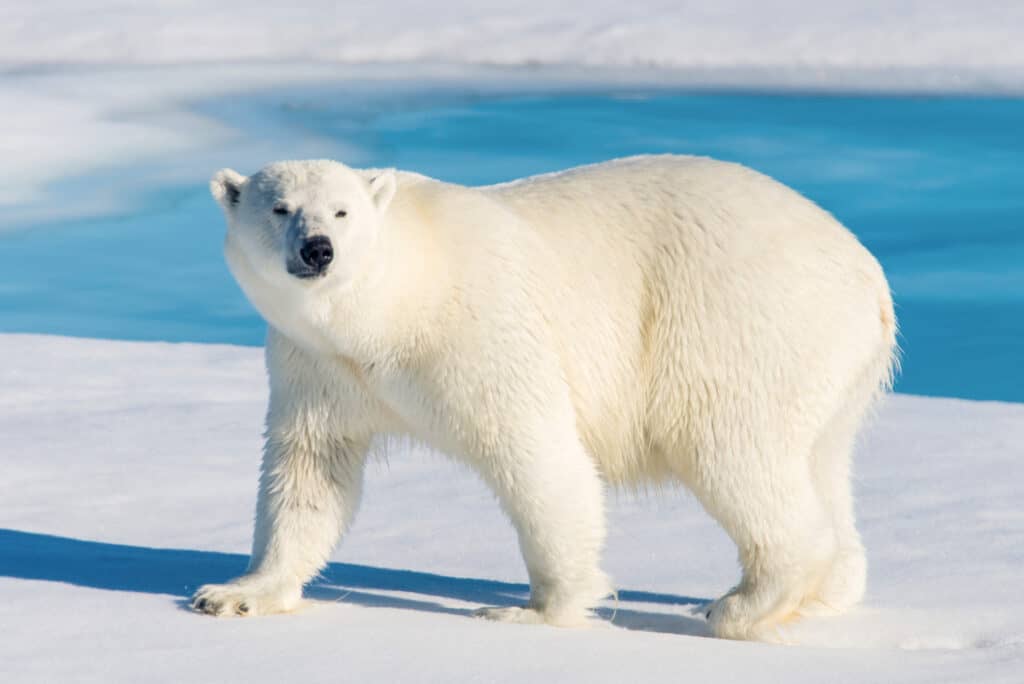
The state of Alaska has more mammals than any other type of animal.
©iStock.com/Alexey_Seafarer
Alaska ranks 12th in terms of mammals in the United States. Despite Alaska being rural, some mammals can be found all over the globe. Alaska has many terrains, some of which can support animals from unique environments.
Currently, the state of Alaska has around 112 known mammal species. However, this number is changing regularly. Below are a few of the mammals you can find in Alaska:
- American Black Bear
- Polar Bear
- Moose
- Mountain Goat
- Dall Sheep
Alaskans Reptiles and Amphibians

The state has some unexpected species that you wouldn’t think to find.
©Magdalena Paluchowska/Shutterstock.com
Alaska also has many reptiles and amphibians despite its icy reputation. Many of these animals don’t do well in tundra and cold climates. So, most of Alaska’s reptile and amphibian population is in warmer regions.
Out of amphibians, six species are known to be native to Alaska. This includes the:
- Western Toad
- Wood Frog
- Columbia Spotted Frog
- Rough-Skinned Newt
- Long-Toed Salamander
- Northwestern Salamander
Alaska has fewer reptiles due to its cold climate. Reptiles thrive in warmer climates, which Alaska is not. That being said, there are a few regions in the state where reptiles can thrive. This can include the south and southcentral regions. However, there are no lizards, freshwater turtles, or snakes.
You can find these reptiles in the state:
- Green Sea Turtle
- Olive Ridley Sea Turtle
Final Thoughts
With Alaska being the biggest state in the country, it has a wide variety of regions and climates. The wildlife in the state is abundant along with its geographical environment. While there is a lot to love about the state, it remains true that most of Alaska is unexplored.
Anyone interested in being submersed in nature would enjoy visiting, especially with many places to see. Hopefully, this has helped you learn how wide Alaska is and more about the state!
The photo featured at the top of this post is © PeterHermesFurian/ via Getty Images
Thank you for reading! Have some feedback for us? Contact the AZ Animals editorial team.






